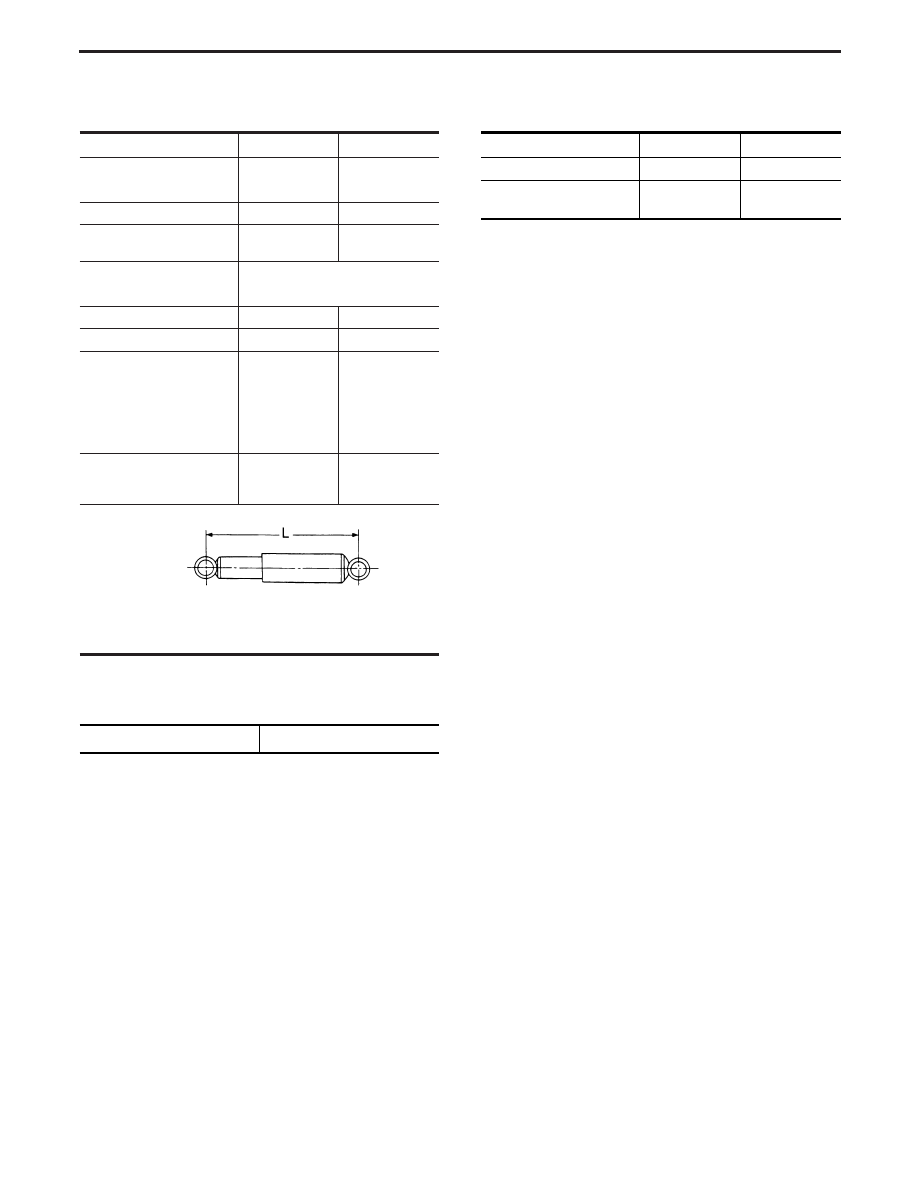Nissan Terrano r20e. Manual - part 406

General Specifications
COIL SPRING AND SHOCK ABSORBER
Model
Hardtop
Wagon
Coil spring
Wire diameter
mm (in)
13.0 (0.512)
13.5 (0.531)
Free length
mm (in)
400 (15.75)
417 (16.42)
Spring constant
N/mm (kg/mm, lb/in)
25.5 (2.6, 146)
29 (3.0, 168)
Shock absorber
Shock absorber type
Non-adjustable (hydraulic)
Maximum length mm (in)
586 (23.07)
596 (23.46)
Minimum length mm (in)
350 (13.78)
356 (14.02)
Damping force
[at 0.3 m (1.0 ft)/sec.]
N (kg, lb)
Expansion
990 - 1,330
(101 - 136,
223 - 229)
1,169 - 1,563
(119 - 159,
223 - 351)
Compression
346 - 524
(35.3 - 53.4,
77.8 - 117.8)
301 - 461
(30.7 - 47.0,
67.7 - 103.6)
RA260
STABILIZER BAR
Model
Hardtop
Wagon
Diameter
mm (in)
23 (0.91)
24 (0.94)
Spring constant
N/mm (kg/mm, lb/in)
24.5 (2.5, 140)
29.0 (3.0, 166)
Inspection and Adjustment
WHEEL BEARING
Total end play
mm (in)
0 (0)
SERVICE DATA AND SPECIFICATIONS (SDS)
RA-16